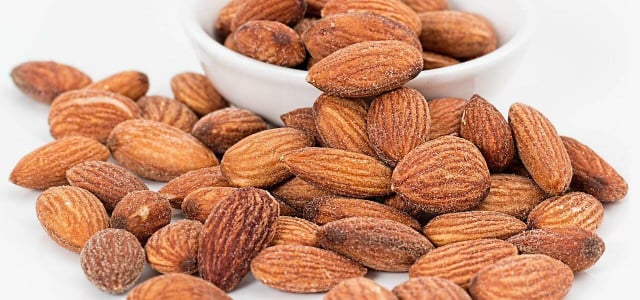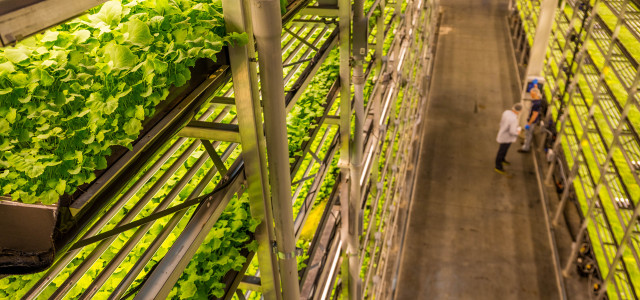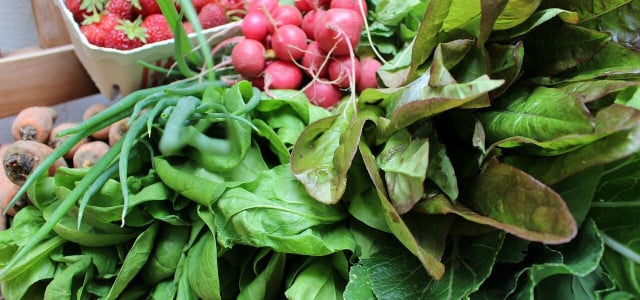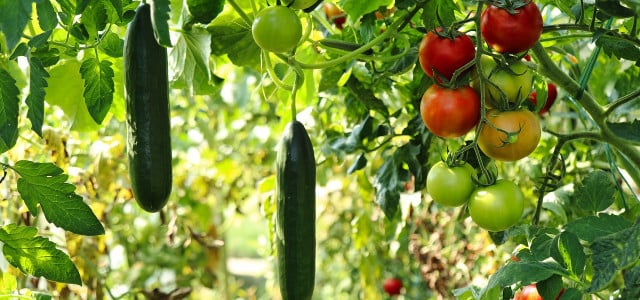Almonds and almond-derived products have long been touted as good vegan-friendly alternatives to animal products. But how sustainable are almonds really?
As you may be aware, almonds are very versatile. They are delicious raw, candied, smoked, roasted or used in decadent dessert recipes. You can also buy or make your own almond oil, almond flour, almond butter and almond milk at home, and the nutritional qualities of almonds are even better than their taste.
Nutritional Benefits of Eating Almonds

(Foto: CC0 / Pixabay / Couleur)
Almonds are a great source of vitamin E, monounsaturated fats, fiber, biotin and minerals such as calcium, phosphorus and magnesium. Almonds also contain trace minerals like copper and phytonutrients — specifically flavonoids, plant sterols and phenolic acids. Many phytonutrients have antioxidant properties that can prevent cell damage. Some have been shown to reduce the risk of cancer, heart disease, stroke, Alzheimer’s and Parkinson’s disease.
The amino acid arginine in almonds is known to help boost the immune system. The vitamins and minerals packed into almonds may help in promoting healthy blood vessels, reduce blood pressure and the risk of heart disease, and could even aid in reducing minor inflammation.
Almonds as a Crop: Life-Cycle and Harvest



(Foto: CC0 / Pixabay / gburrull)
Almond farming is a long-term commitment, with orchards being productive for up to 25 years, yielding their first crop three years after planting. Almonds trees go through the following stages:
- Dormancy: November through January, almond trees go through a period of dormancy, and at the end of this period, buds appear on the almond tree’s branches in preparation for bloom.
- Flowering: between mid-February and mid-March, almond trees display light-pink flowers. Beekeepers bring hives into the orchards to help pollinate the crop. As the trees blossom, honey bees forage for pollen and nectar and as they move from tree to tree, they pollinate almond blossoms as they go.
- Maturity: from March to June, almond kernels mature and grow to full size, with the shell hardening around it — both protected by a fuzzy outer hull. Once the spring rains stop and the weather heats up, farmers begin irrigating their orchards.
- Hull split: In July, almond hulls split open, exposing the almond shell and allowing it and the kernel inside to dry.
- Harvest: From August through October, mechanical tree shakers harvest the crop by vigorously shaking it to the ground. Protected by their outer hulls and shells, the almonds then dry naturally in the warm California sun before final collection and processing.
Almonds From California are Popular Worldwide
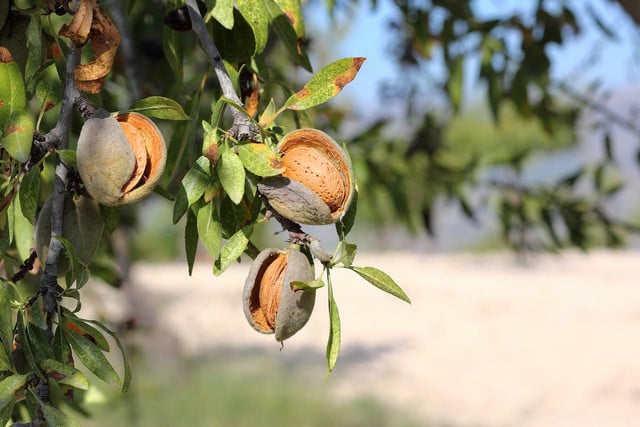


(Foto: CC0 / Pixabay / joseviparra)
According to the US Sustainability Alliance, the state of California grows close to 100 percent of commercial almonds in the U.S. and 80 percent of almonds worldwide. This is because California has just the right Mediterranean-style climate needed for almond crops to really thrive. In the US, almonds are typically harvested from the middle of August through to early October.
As the benefits of eating almonds receive more and more recognition, the demand soars and growers are struggling to keep up. Out of all almond products, almond milk and almond butter have shown the greatest growth in consumer demand in recent years, with the Harvard School of Public Health stating that almond milk sales grew by 250 percent between 2011 and 2015, and almond butter production has tripled since 2011.
As a whole, the almond industry is one of California’s most valued commodities, earning a whopping $5.62 billion in 2020 alone.
Aside from supply shortages to meet this increased demand, there are long-standing concerns about the amount of water that is needed for almond production, and the fact that almond trees are entirely dependent on honeybees and wild bees to pollinate their blossoms and grow the almond drupe. The Almond Alliance of California states that every almond exists “because a honey bee pollinated an almond blossom”.
Eating almonds does not only have benefits: another downside of almond production is the industry’s heavy reliance on the use of synthetic pesticides. Of course, this is not a problem unique only to almond farming, since most non-organic crops will invariably use synthetic pesticides to ensure a good harvest. But according to the USDA’s Pesticide Data Program 2020 Annual Summary, almond crops do tend to use more than their share, with pesticide residue on almonds being an ongoing concern. Residue from insecticides such as piperonyl butoxide (PBO) and chlorpyrifos appear to be the most common ones detected on non-organic almonds. PBO is toxic to fresh- and saltwater fish, and often used together with insecticides that are toxic to bees. In 2022, Chlorpyrifos is under review by the EPA for health risks in humans, such as neurodevelopmental effects.
So are almonds a delight? Or a disaster?
Almond Production & the Environment
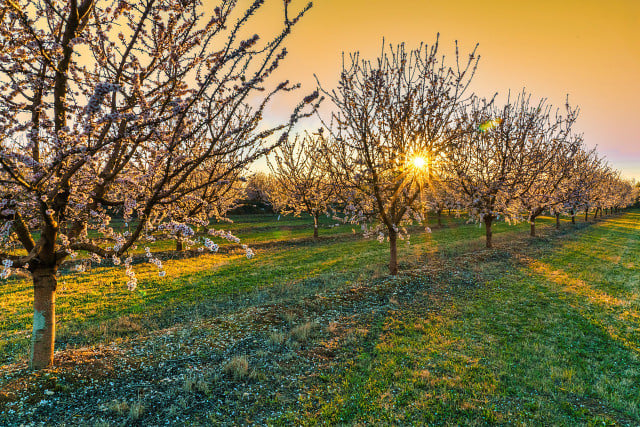


(Foto: CC0 / Pixabay / rperucho)
You have likely heard about how the production of California almonds requires a vast amount of water — about a gallon per almond. But according to the Yale School of the Environment, when compared to nutrient and energy-dense foods, like meat or dairy for instance, it turns out that almonds have a remarkably small carbon footprint. These results are driven largely by the use of almond co-products as sources of renewable energy and dairy feed, which is part of the California almond industry’s renewed efforts to become carbon neutral or even carbon negative by 2025. Therefore, by buying and eating almonds or almond products instead of dairy, you are indirectly taking a step towards carbon neutrality.
However, it is an inescapable fact that almond crops make up around 10 percent of the state’s annual agricultural water use, more than what the entire population of Los Angeles and San Francisco use in a year. Annual crops like cotton, alfalfa, and veggies are flexible as the farmers can fallow them in dry years. That’s not the case for nuts, which need to be watered every year or the trees die, wiping out farming investments. Given the growing severity of droughts in California in recent years, this is a major issue that needs to be overcome with long-term sustainable initiatives.
The Almond Board of California has stated that almond growers reduced the amount of water needed to grow each pound of almonds by 33 percent between the 1990s and 2010s, with aims to reduce water used to grow a pound of almonds a further 20 percent by 2025.
These steps towards easing the almond industry’s heavy reliance on water are welcome (if not overdue) in the face of what the University of California San Francisco (UCSF) Office of Sustainability has to say about this issue: according to a 2018 article the UCSF said that the ground in the San Joaquin Valley — where most of the state’s almonds are produced — is actually sinking each year due to groundwater depletion. Clearly, this is a serious issue that needs to be tackled before environmental and economic damage to surrounding communities becomes irreparable.
Given that number of almond orchards has doubled in California during the last two decades, these large types of mono-crop farming practices are not good for biodiversity. The year-round irrigation needed for almond trees puts huge pressure on water supplies, as water is often diverted from rivers and nearby wetlands. This can negatively impact native flora and fauna which heavily rely on these for their existence.
Community Impact of Eating Almonds



(Foto: CC0 / Pixabay / ronymichaud)
The US Sustainability Alliance says that more than 110,000 jobs have been created by the almond industry in California, contributing to the economic viability and stability of communities throughout the region. This, combined with the fact that of the 7,600 almond farms currently operating in California, 91 percent are owned and operated by family growers who live on their land and plan to pass it on to younger generations, makes it essential for the industry to ensure its longevity and sustainability. Besides that, almond production is a massive earner for the state’s overall GDP.
Furthermore, the US Sustainability Alliance maintains that the Almond Board of California (ABC) is committed to promoting bee health, leading bee research efforts since 1995, so growers can provide safe habitats for bees before they move on to pollinate other crops.
This remains to be seen in the face of fluctuating bee populations in the US, which have been affected by factors outside of the almond cultivation industry — such as the use of heavy insecticides in grain crops — not to mention the historical droughts in California in recent years. Nonetheless, the initiatives being undertaken by almond producers in California are definitely good signs that the industry as a whole has become more focused on sustainability and its long-term consequences.
What We Can Do to Help
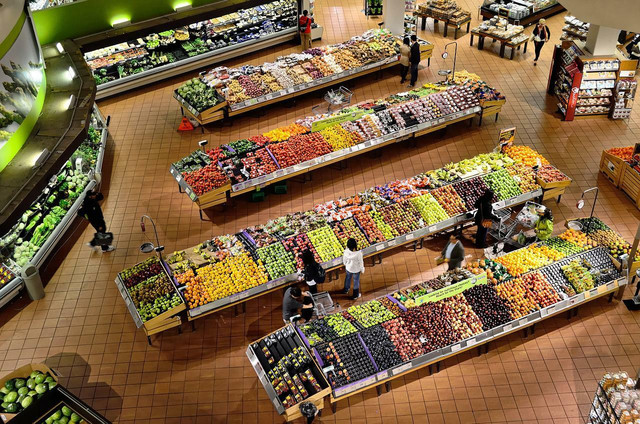


(Foto: CC0 / Pixabay / ElasticComputeFarm)
In the meantime, we can all do our small part in helping out and reducing our impact on the natural world while we enjoy the nutritional benefits of eating almonds. Next time you are out shopping for almonds — or any other food product for that matter — try to keep the following points in mind:
- Make your almond milk at home. This way you decide how much water you use. If you use organic almonds, you are getting a purer product free of additives.
- Shop locally to support local producers and cut down on transport costs at the same time.
- To reduce waste, buy foods that aren’t wrapped in paper or plastic.
- Try to buy seasonally as this will reduce strain on supply and will help reduce carbon emissions associated with the transportation of goods.
- If you have a garden you can try growing your own fresh produce at home for a more sustainable lifestyle.
- Instead of almond milk, try out some other plant-based alternatives such as organic hazelnut milk, cashew milk (cashews need less water to grow than almonds), flaxseed milk, or homemade potato milk.
Read more:
- Soy Milk vs. Almond Milk for the Planet and You
- Is Almond Milk Vegan? Let’s Take a Look
- How to Roast Almonds in 2 Easy Steps
Do you like this post?






